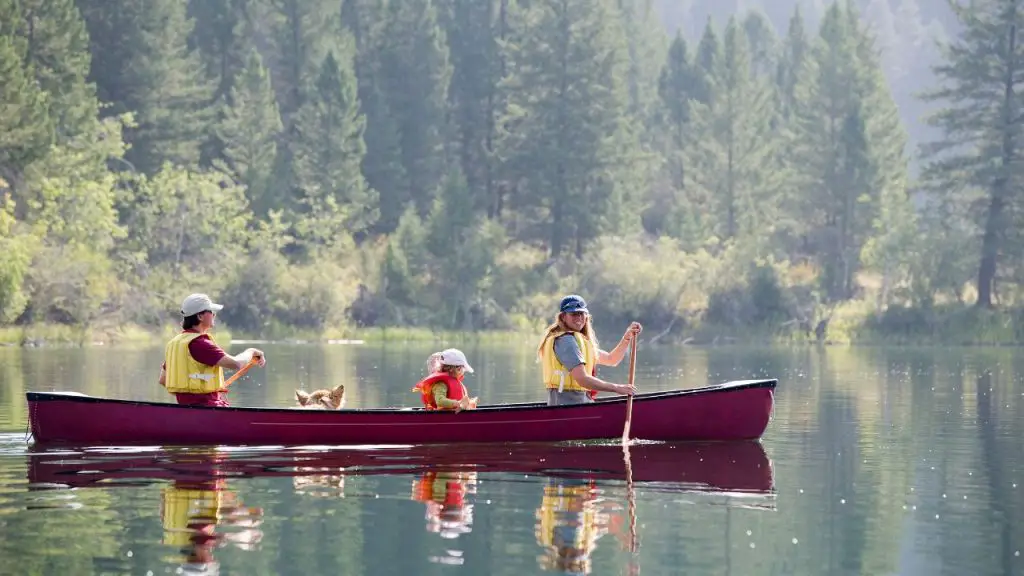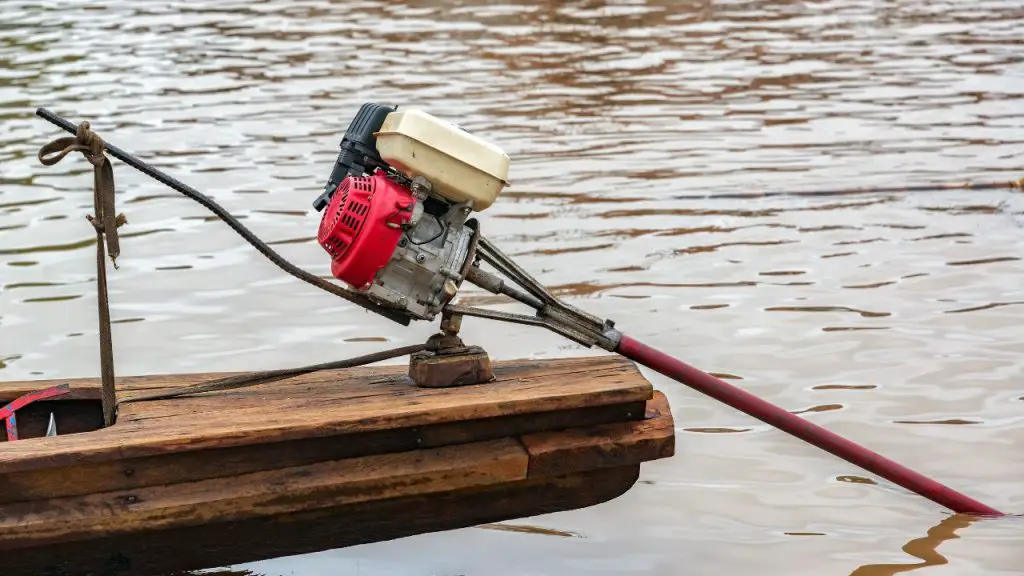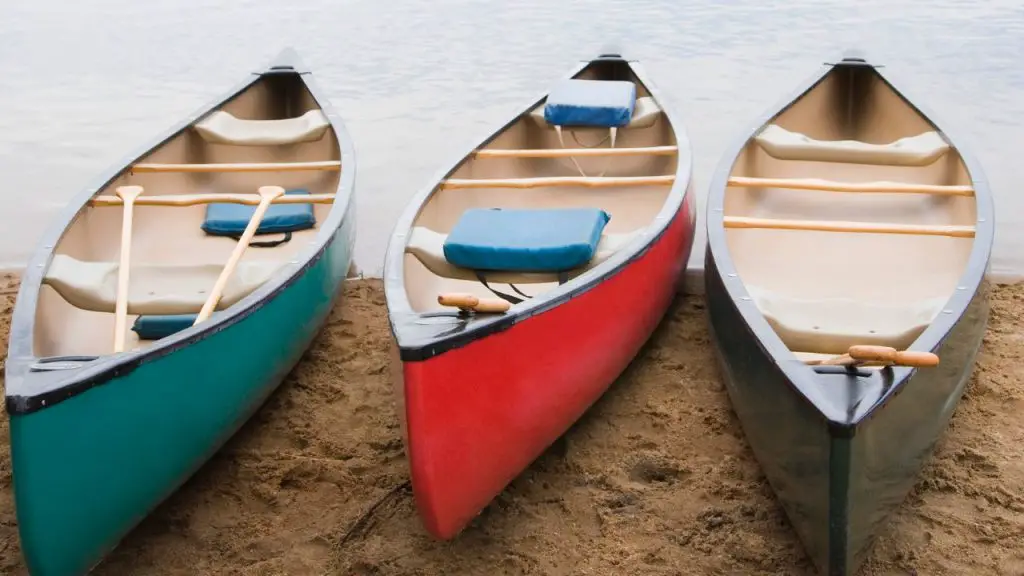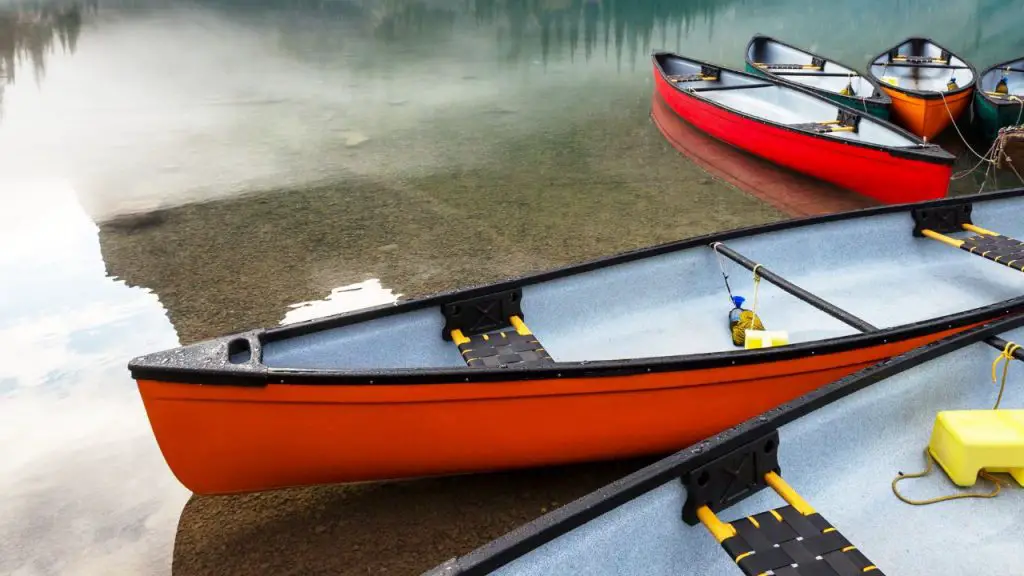How much weight can a canoe hold? This is one question you would ask yourself when you really want to do more with your canoe.
Aside from canoeing for leisure or for fun, there are days when you would like to go on an adventurous canoeing trip alone, with family, or with friends.
This trip may be overnight or take several days and as such will require you to take a lot of things with you. Then you start wondering if your loads or the persons in your canoe won’t cause the canoe to sink.
Well, this article is here to help you to know how much weight different types and sizes of canoes can hold, the factors affecting weight capacity, the basic load types of canoes, and weight limits.
You will also learn how to calculate the maximum weight capacity of your canoe so as to know how many people can fit into it.
Table of Contents
How Much Weight Can a Canoe Hold?

The weight holding capacity of a canoe depends on its type, building materials, length, width as well as manufacturers. However, remember that around half the official maximum limit is where the optimal weight lies.
The average canoe holding capacity is 940 pounds.
A 12-foot canoe can hold 400 pounds of gear and passengers at its maximum weight limit.
The average 14′ canoe can bear 700 pounds of gear and passengers. And the average 17′ canoe has a holding capacity of over 1160 pounds of gear and passengers.
An 18-foot canoe has a holding capacity of 1400 pounds while a 20-foot canoe has the ability to hold weight up to 1900 pounds.
Examples of Weight Canoe Capacity
| Canoe Brand/Model | Length | Width | Persons | Persons lbs | Max Capacity |
| Mad River Adventure 14 | 14′ | 37″ | 2 | 431 lbs | 875 lbs |
| Merrimack Baboosic 14 | 14′ | 34.5″ | 1 | 402 lbs | 550 lbs |
| Novacraft Fox 14 Solo | 14′ | 32″ | 1 | 373 lbs | 550 lbs |
| Wenonah Fisherman 14 | 14′ | 39″ | 2 | 455 lbs | N/A – 800 lbs(est.) |
| Novarro Otter 14 | 146″ | 34.5″ | 2 | 416 lbs | 500 lbs |
| Old Town Saranac 146 | 146″ | 36″ | 2+ | 435 lbs | 750 lbs |
| Old Town Guide 147 | 147″ | 38″ | 2 | 461 lbs | 900 lbs |
| Mad River Explorer 16 T Formex | 1511 | 35″ | 2 | 464 lbs | 1100 lbs |
| Old Town Saranac 160 | 16′ | 37″ | 2+ | 493 lbs | 850 lbs |
| Old Town Guide 160 | 16′ | 39.5″ | 2 | 526 lbs | 1250 lbs |
| Merrimack Prospector 16 | 16″ | 34″ | 2 | 453 lbs | 900 lbs |
| Merrimack Souhegan 16 | 16′ | 36″ | 2 | 480 lbs | 750 lbs |
| Navarro Loon 16 | 16′ | 35″ | 2/3 | 466 lbs | 900 lbs |
| Navarro Otter 16 | 16′ | 36″ | 2/3 | 480 lbs | 675 lbs |
| Wenonah Aurora | 16′ | 36″ | 2 | 480 lbs | N/A – 1000 lbs (est.) |
| Mad River Explorer 16 FGX | 163″ | 34.5″ | 2 | 468 lbs | 1100 lbs |
| Hemlock Eagle 16 | 165″ | 35.25″ | 2 | 482 lbs | 900 lbs. |
| Mad River Journey 167 | 167″ | 37″ | 2 | 514 lbs | 1100 lbs |
| Old Town Discovery 169 | 169″ | 37″ | 2 | 516 lbs | 1400 lbs |
| Merrimack Traveler 17 | 17′ | 35″ | 2 | 496 lbs | 850 lbs. |
| Navarro Loon 17 | 17′ | 35″ | 2 | 496 lbs | 900 lbs |
| Nova Craft Haida 17 | 17′ | 36″ | 2 | 510 lbs | 1200 lbs |
| Wenonah 17 | 17′ | 37″ | 2 | 524 lbs | N/A – 1200 (est.) |
| Old Town Penobscot 174 | 174″ | 36″ | 2 | 520 lbs | 1500 lbs |
3 Basic Load Types of Canoe
The 3 basic types of loads that canoes are designed to hold include:
- Paddlers and Passenger Capacity
This involves the number of paddlers or passengers that can ride safely and with comfort in your canoe at a time. The overall gear, motor, and people capacity are always more than its capacity.

- Canoeing Gear
This includes a total of your wear, your paddle, life jacket, and other camping materials you intend to take for your adventure trip. So, gear is not considered as a single weight limit for canoes but the inclusion of the overall holding capacity of a canoe.
- Canoe Motor HP and Capacity
Weight and horsepower are two important factors to consider when talking about the motor capacity limits of a canoe.
The overall carrying capacity of a canoe includes the motor’s weight of the canoe while the horsepower as a maximum power limit is based on the safety of the quantity of power and speed required to propel a given size of a canoe.
Non-motorized canoe weight limits: This refers to the maximum weight limit that should not be exceeded in people and gear for a canoe that is not propelled by means of a motor.
Motorized canoe weight capacities: Canoes that are propelled by means of a motor usually have a capacity decal indicating the legal amount of weight and number of persons it can hold.
The attached motor’s maximum horsepower rating is indicated as well as the model and the serial number of the canoe. The decal can tell you the manufacturer too.
Exceeding your motorized or non-motorized canoe’s weight limit maximum can pose instability, reduced movement as well as paddling inefficiency

2 Basic Types of Canoe Weight Limits
Canoe Weight Limit Maximum
This is the maximum weight that your canoe can bear and still stay afloat. This number will vary depending on the size and construction of the canoe and how many people are paddling.
However, as a general rule of thumb, most canoes have a maximum capacity of around 600 pounds. This means that they can safely accommodate two adults and a child, or two adults and some gear.
It’s always best to check with the manufacturer or a local outfitter before heading out on your trip to make sure that your canoe can safely handle your group’s weight.

Canoe Performance Weight Limit (Optimum Load Range)
This is the optimum weight limit that can assure you the best performance out of your canoe.
A canoe’s performance weight limit is an indicator that what you load your canoe with should be a lot less than what the manufacturer has specified as its maximum weight limit.
The purpose of this is to make your canoe offer you its most efficient performance and exceeding this practical limit puts your canoe at the risk of sinking down the river.
Factors That Affect Canoe Weight Capacity
The weight holding capacity of a canoe can be affected by factors which include canoe size in the dimension of length, width and depth, build materials, and fullness.
These factors determine whether the weight holding capacity of your canoe increases or decreases and they are explained below.

Canoe Size
Canoe Length: The holding capacity of a canoe is dependent on the length. That is, the more weight you want your canoe to hold, the longer it has to be.
Width (Beam): The weight holding capacity of your canoe increases relative to the wideness of your canoe.
Depth: If your canoe’s length or width cannot be altered, then the depth of your canoe measured from the gunnel to the hull’s bottom can increasingly determine its holding capacity. That is, more depth, more weight holding capacity.
Build Materials
Canoes built with materials like polyethylene plastic, aluminum, and fiberglass tend to be heavier and as such hold less weight. While canoes built with materials like Kevlar and ultra-lite composite are very light, so they can hold more weight.
Fullness
The term fullness refers to how fast your canoe turns wide when movement is being made toward the middle from the bow or stern. So the fuller your canoe, the more weight it holds, and the thinner it is, the less weight it holds.
Why Do Some Manufacturers Not List a Maximum Weight Capacity?

For some manufacturers, having the maximum weight capacity limits in their canoes descriptions is never on their list.
Now, you may wonder why these manufacturers, some of which include Clipper Canoes and Wenonah canoes do not give such important information.
Well, these sets of manufacturers are of the opinion that disclosure of maximum weight capacities can mislead.
This line of thought actually follows rational reasons which include:
The water in the lowest part of your canoe’s hull tops up the vessel’s load in no time.
The point is that your canoe may not function practically if it is filled up close to or to its stated maximum limit.
The expertise and experience level of the paddler can affect the quantity of load a canoe can handle.
How to Calculate Canoe Weight Limit

Calculating your canoe weight limit simply involves using the formula: Length × Width / 18
You can measure the carrying capacity of your canoe using this formula after which you multiply your result by 180 to get your canoe’s maximum weight limit.
For instance, assume that your canoe has a length of 16.5 feet with a width of 3 feet. Using the above formula, you have 16.5 as length and width as 3.
When you multiply it, you get 49.5. Then divide 49.5 by 18, you get 2.75 which implies the approximate number of persons your canoe can carry.
However, to get a definite weight limit value, it is necessary you multiply 2.75 by 180(average human weight). Then you get your canoe’s maximum weight limit for persons as 495 pounds.
The summary of this calculation is given as (Length × Width / 18) × 180. So with this formula, you can get the maximum weight limit of any canoe, although it’s not always accurate.
Is a Heavier Canoe More Stable?
Yes, the heavier your canoe, the more stable it is. This is because, the more substantial load you have in your canoe, the more it is able to strike a balance on the water.
What if Your Load is Too Heavy or Too Light?
If your load becomes too heavy for your canoe, it becomes very difficult for it to ride above the waves just in time. So, your canoe tends to crash through instead and sometimes the gunwales can get crashed over by the waves too.
When your canoe is light or not stuffed with a substantial load, it gets unstable and can even take you off course. Ultra-lite canoe like the 18-foot Kevlar with no gear finds it difficult fighting the wind and as such can get the paddler into trouble
How Many People Can Fit In A Canoe?

Calculating the maximum weight capacity of your canoe is the best way to estimate how many people your canoe can accommodate.
It is also necessary for you to know the manufacturer’s recommendation as regards the maximum weight capacity of the particular canoe.
The number of people that can fit in your canoe is dependent on the dimension of your canoe in size and length.
This means that, the more the length of your canoe, the more its weight holding capacity as well as the more persons it can accommodate.
Remember that you possess additional gear and equipment, so you should consider calculating all the loads you intend to carry.
Your calculation should include the number and size of paddlers, canoe trolling motors, and additional gear for your activities.
FAQs
How much weight can a 15-foot canoe hold?
A 15-foot canoe can hold about 800 pounds in weight. Since the length of the canoe is able to hold up to three people, it is suitable for a family canoeing trip.
How much weight can a 14-foot canoe hold?
A 14-foot canoe can bear a weight of 700 pounds in gear and passengers. This can hold up to two people and is ideal for a solo trip.
How Much Weight Can a 12-Foot Canoe Hold?
The weight holding capacity of a 12-foot canoe lies at 400 pounds of gear and passengers. This is also suitable for solo adventure.
How much weight can a kayak hold
A kayak can hold weight ranging from 250 – 600 pounds, depending on whether the kayak is recreational, sit-on-top, or tandem.
Can you canoe if you’re fat?
Of course, however, it’s more suitable to go solo, and if you must go with someone, ensure you take the middle position of the canoe. Lowering your seat can help too.
Where should the heaviest person sit in a canoe?
To effect balance, the heaviest person should sit in the middle position of the canoe if there are three people.
In cases where there are just two people, the heaviest person should sit at the back of the canoe.
Do canoes tip over easily?
Yes, they do, especially when your weight distribution is uneven. External factors also contribute to a canoe tipping over.
However, you can learn methods like lowering your center of gravity and proper balancing to keep them from tipping over.
Are canoes unstable?
Yes, factors like weight, weather conditions, building materials, and center of gravity affect canoes, hence an increased chance of instability.
Wrapping Up
How much weight a canoe can hold is dependent on many factors which have been discussed in this article.
And while there is not really any hard-and-fast rule to calculating the maximum weight limit of your canoe, it’s best to stay at the optimum weight limit.
You do not want your canoe capsizing, so just stay safe by not filling your canoe with loads or persons up to the maximum limit. Try leaving an allowable margin of freedom.

1 thought on “How Much Weight Can a Canoe Hold?”